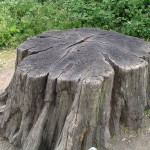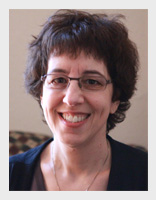Why Young-Adult Books Are for Everyone
I grew up in Queens. My parents, older brother and I moved several times before I went away to college upstate, but we always stayed in Queens—which, though part of New York City, didn’t feel like a city. Or a suburb, or a small town, or the countryside. This place that felt like no place became the fictional neighborhood “Belle Heights,” where my imagination seems to live.
When I was seven, I sat on the edge of an old, enormous tree stump. Sadly, a magnificent tree had been cut down because an old lady thought the tree would fall on her apartment. She had a dog whose ears were always taped up. The dog’s name was “Impy,” short for “Impossible.”
On that tree stump, I had an odd experience. Suddenly, the whole world looked entirely, overwhelmingly, different. I saw my life split into two parts. Early childhood was on one side of this moment, and the rest of childhood was on the other.
It happened again seven years later, at age 14. I can’t remember exactly where I was, definitely not on the tree stump. Again, it took only an instant. This time, all of childhood was on one side of the moment, and early adulthood loomed on the other. My “14-year-old head” was seeing everything anew. This was also when I started writing. My first short story, “Let Me Tell You a Little Bit About Myself,” was written from the point of view of a 14-year-old girl I knew. She was madly in love with her boyfriend, Paul. The first line was, “I love Paul and I always will.” She went on to have a fight with Paul, and fell in love with several other guys, and then made up with Paul. The last line was, “I love Paul and I always will.” The story, never published of course, taught me about character, voice, and structure.
This is also why many of my characters experience life-altering changes at lightning speeds. I don’t question if this is realistic. I know it is because it happened to me.
So I figured I had a pattern; this transformation, or whatever it was, which had occurred at seven and 14, would happen every seven years—at 21, 28, 35, and so on. But it never happened again. There have been quite a few seven-year milestones since then, but at 14, something stayed in place. I think this is true for most people. They carry pieces of themselves from different ages and like to read books that remind them of who they used to be and how it led to the person they are now.
When people ask me what age I write for, I say, “My age.”


